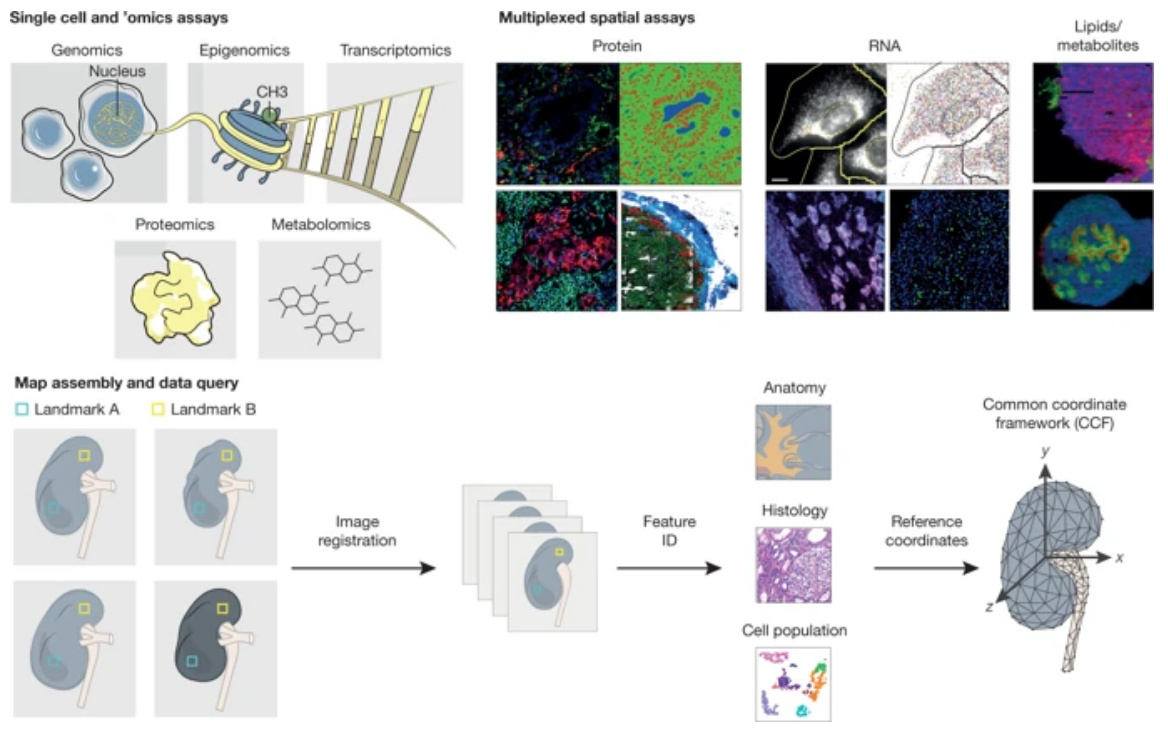The human body at cellular resolution: the NIH Human Biomolecular Atlas Program

Abstract
Transformative technologies are enabling the construction of three-dimensional maps of tissues with unprecedented spatial and molecular resolution. Over the next seven years, the NIH Common Fund Human Biomolecular Atlas Program (HuBMAP) intends to develop a widely accessible framework for comprehensively mapping the human body at single-cell resolution by supporting technology development, data acquisition, and detailed spatial mapping. HuBMAP will integrate its efforts with other funding agencies, programs, consortia, and the biomedical research community at large towards the shared vision of a comprehensive, accessible three-dimensional molecular and cellular atlas of the human body, in health and under various disease conditions.
Citation
MP Snyder, S Lin, A Posgai, M Atkinson, A Regev, J Rood, O Rosen, L Gaffney, A Hupalowska, R Satija, N Gehlenborg, J Shendure, J Laskin, P Harbury, NA Nystrom, Z Bar-Joseph, K Zhang, K Borner, Y Lin, R Conroy, D Procaccini, AL Roy, A Pillai, M Brown, ZS Galis (for the HuBMAP Consortium). “The human body at cellular resolution: the NIH Human Biomolecular Atlas Program”, Nature 574(7777):187-192 (2019). doi:10.1038/s41586-019-1629-x